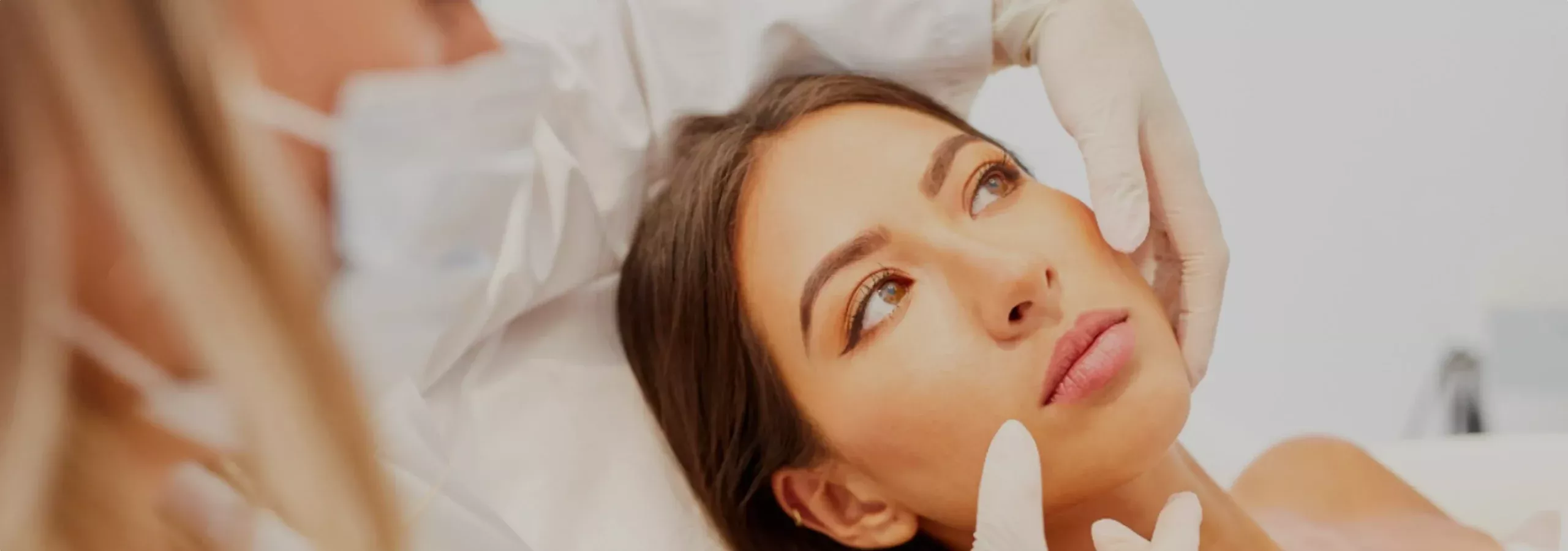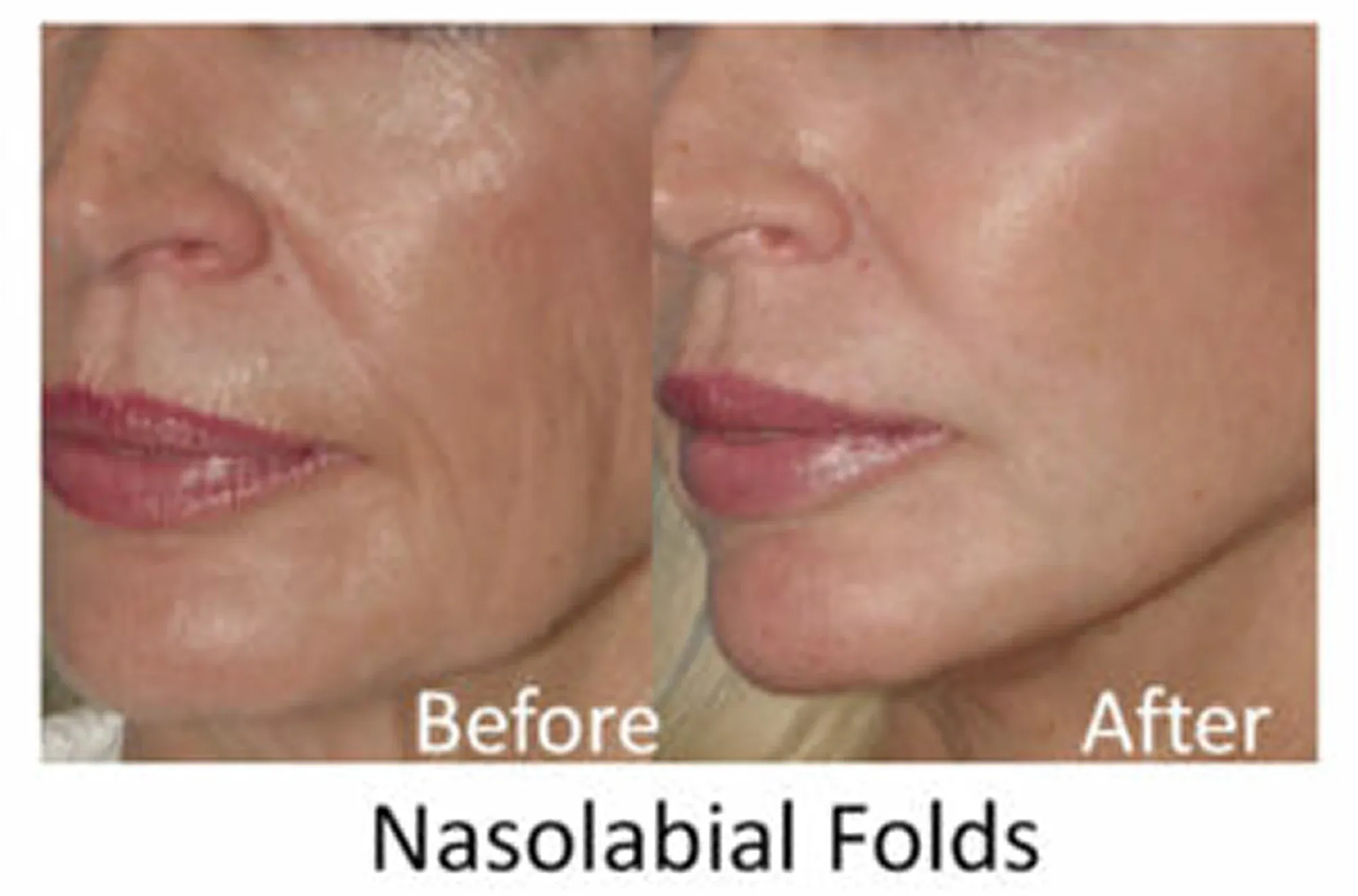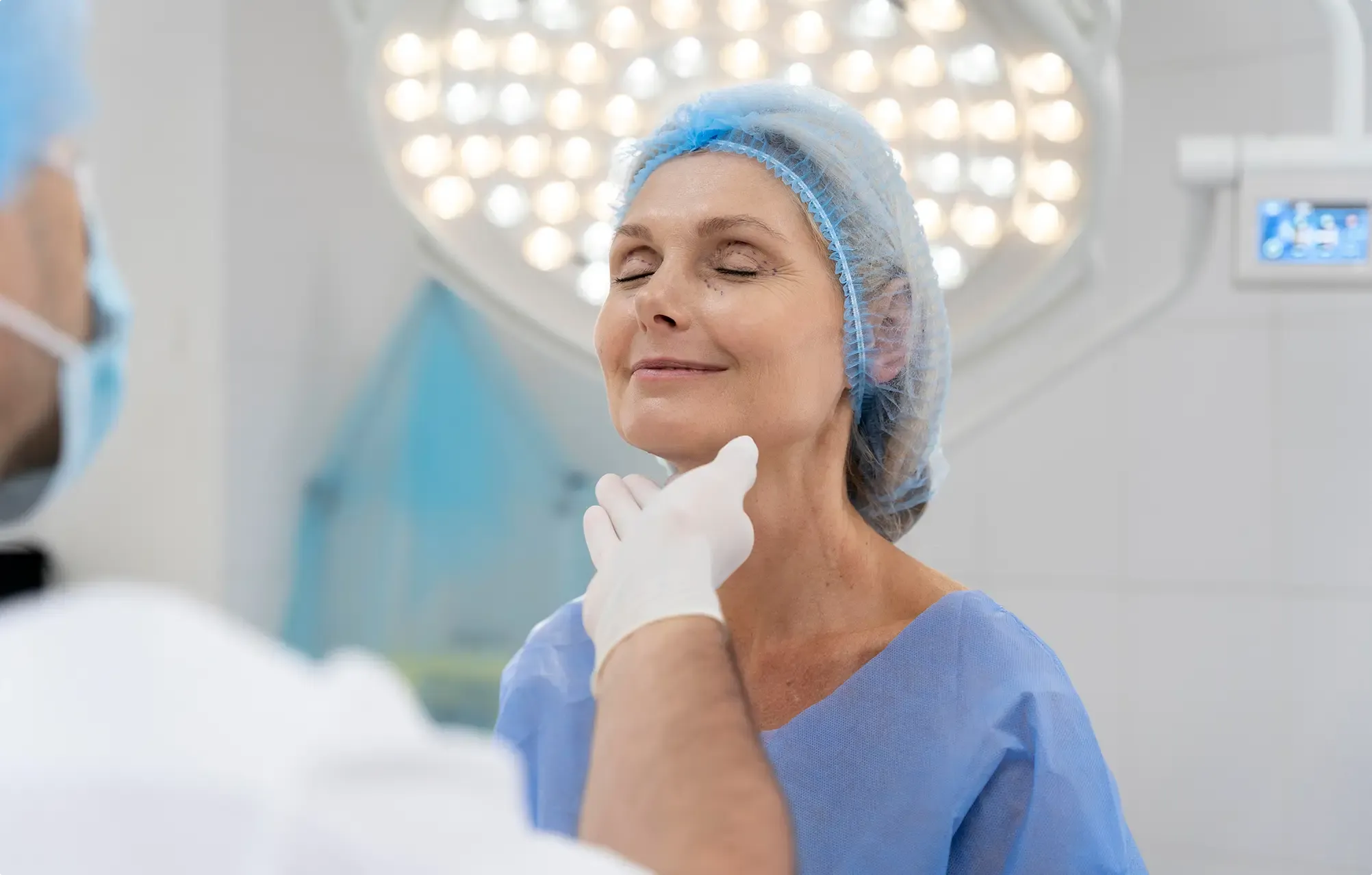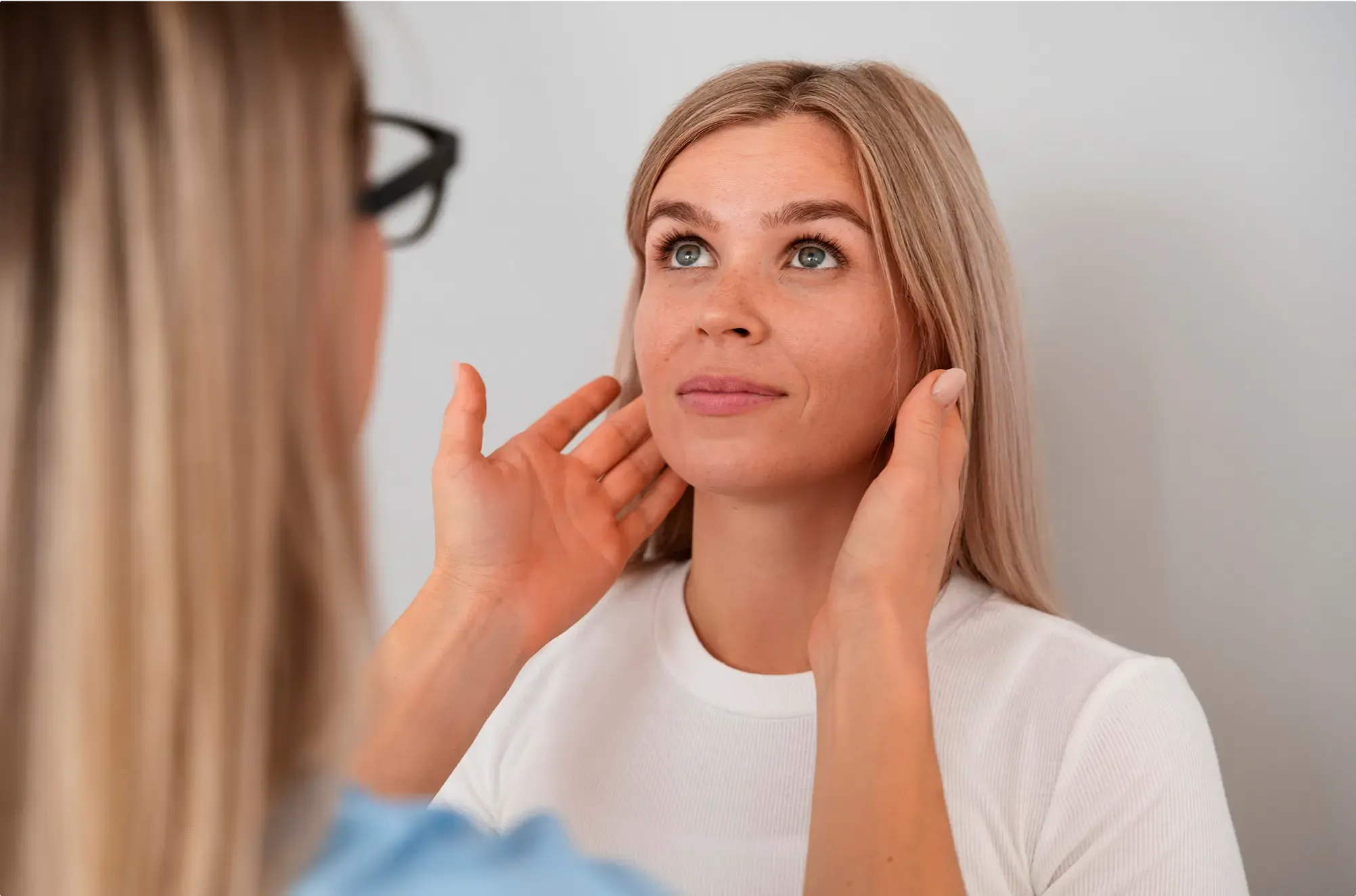
Experience Timeless Beauty with Expert Precision
If you’re in Queens and seeking a sophisticated approach to facial rejuvenation, Mourad NYC offers results that blend artistry with medical precision. A facelift isn’t just about turning back the clock—it’s about revealing a refreshed, vibrant version of yourself that mirrors the confidence you feel inside.
Dr. Moustafa Mourad, a renowned double board-certified facial plastic surgeon based in NYC, performs every facelift with refined techniques designed to lift and contour the face while preserving your unique beauty. His thoughtful approach draws patients from Queens and beyond.
Dr. Moustafa Mourad, a renowned double board-certified facial plastic surgeon based in NYC, performs every facelift with refined techniques designed to lift and contour the face while preserving your unique beauty. His thoughtful approach draws patients from Queens and beyond.
What is a Facelift?
A facelift, medically known as a rhytidectomy, is a surgical treatment that restores a youthful appearance by repositioning facial tissue and tightening sagging skin. With age, natural volume loss and skin laxity cause jowling and deep creases. A facelift reverses these effects by lifting underlying muscles, removing loose skin, and improving overall facial definition.
Whether you’re considering a full facelift to treat advanced aging or a more localized mini-lift to refresh specific areas like the lower face or neck, Dr. Mourad tailors every procedure to the individual. Queens residents trust his skill and eye for detail to deliver transformative yet natural-looking results.
Whether you’re considering a full facelift to treat advanced aging or a more localized mini-lift to refresh specific areas like the lower face or neck, Dr. Mourad tailors every procedure to the individual. Queens residents trust his skill and eye for detail to deliver transformative yet natural-looking results.

Benefits of a Facelift
A facelift at Mourad NYC offers natural, lasting results that help you feel more like yourself. Benefits include:
- Smoothing deep wrinkles and folds around the nose and mouth
- Lifting sagging cheeks to restore youthful volume
- Tightening skin along the jawline to diminish jowls
- Enhancing chin and neck definition
- Reducing loose, crepey skin for a firmer look
- Boosting confidence by restoring facial balance
- Providing results that age gracefully over time
Which Areas Can Be Corrected with a Facelift?
A facelift targets multiple signs of facial aging by lifting deep tissues, tightening weakened muscles, and removing surplus skin. Dr. Mourad employs sophisticated surgical techniques tailored to your unique anatomy to deliver natural-looking, durable results. Key areas commonly addressed include:
Jowls: With age, facial tissues tend to descend and accumulate along the jawline, creating a heavy or squared jaw appearance. Dr. Mourad carefully repositions and lifts the lower cheek structures, restoring a smooth and youthful jaw contour.
Neck Banding: Over time, vertical neck bands appear as muscles contract tightly. Dr. Mourad brings these muscles together beneath the chin, producing a more defined, streamlined neckline.
Loose Skin: Sagging skin on the face, neck, and forehead can contribute to a fatigued or aged look. The procedure lifts the underlying structures first, then removes excess skin without undue tension, resulting in a refreshed yet natural appearance.
Fat Under the Chin: Submental fullness, or fat beneath the chin, can arise from genetics, aging, or fluctuations in weight. Dr. Mourad often uses targeted liposuction to eliminate this fat, combined with skin tightening methods to refine the jawline and neck.
Midface Volume Loss: As cheek tissue descends, the midface appears flattened and the folds beside the nose and mouth deepen. By lifting this tissue, Dr. Mourad restores cheek fullness and improves facial symmetry. In some cases, additional volume may be recommended through cheek implants or dermal fillers.
Nasolabial Folds: The deepening lines running from the nose to the mouth corners become more prominent as the cheeks sag. Repositioning the deeper facial layers softens these folds, and Dr. Mourad may supplement with fillers for enhanced refinement if appropriate.
Jowls: With age, facial tissues tend to descend and accumulate along the jawline, creating a heavy or squared jaw appearance. Dr. Mourad carefully repositions and lifts the lower cheek structures, restoring a smooth and youthful jaw contour.
Neck Banding: Over time, vertical neck bands appear as muscles contract tightly. Dr. Mourad brings these muscles together beneath the chin, producing a more defined, streamlined neckline.
Loose Skin: Sagging skin on the face, neck, and forehead can contribute to a fatigued or aged look. The procedure lifts the underlying structures first, then removes excess skin without undue tension, resulting in a refreshed yet natural appearance.
Fat Under the Chin: Submental fullness, or fat beneath the chin, can arise from genetics, aging, or fluctuations in weight. Dr. Mourad often uses targeted liposuction to eliminate this fat, combined with skin tightening methods to refine the jawline and neck.
Midface Volume Loss: As cheek tissue descends, the midface appears flattened and the folds beside the nose and mouth deepen. By lifting this tissue, Dr. Mourad restores cheek fullness and improves facial symmetry. In some cases, additional volume may be recommended through cheek implants or dermal fillers.
Nasolabial Folds: The deepening lines running from the nose to the mouth corners become more prominent as the cheeks sag. Repositioning the deeper facial layers softens these folds, and Dr. Mourad may supplement with fillers for enhanced refinement if appropriate.
Are You a Candidate for a Facelift in Queens?
You may be a great candidate for facelift surgery if you live in Queens and feel your reflection no longer matches your inner vibrancy. This procedure can help restore definition and youthfulness when:
- You’re experiencing sagging skin or pronounced wrinkles
- You’ve noticed jowls or a softened jawline
- There’s visible neck fullness or vertical neck bands
- You’re generally healthy with no major conditions affecting recovery
- You’re seeking results that offer long-term rejuvenation and subtle refinement
What To Expect During
What To Expect During Your Consultation
Your journey begins with a private consultation with Dr. Mourad, who dedicates ample time to fully understand your aesthetic goals and conduct a comprehensive evaluation of your facial anatomy. This appointment typically lasts at least an hour and involves a detailed review of your medical history, a thorough facial assessment, and an in-depth conversation about the improvements you desire.
During the visit, Dr. Mourad uses photographs taken from multiple angles to help you pinpoint specific areas you want to enhance or correct. He may also utilize computer imaging technology to illustrate possible results, helping you visualize the potential changes and set realistic expectations. While these images cannot guarantee exact outcomes, they provide a valuable reference point for your discussion and collaboration.
This initial consultation is also designed to give you ample opportunity to ask questions, consider various surgical approaches, and feel confident and well-informed before proceeding. Dr. Mourad will carefully explain the recommended surgical plan, outline the expected recovery process, and guide you through what to anticipate at every stage of your facelift journey.
During the visit, Dr. Mourad uses photographs taken from multiple angles to help you pinpoint specific areas you want to enhance or correct. He may also utilize computer imaging technology to illustrate possible results, helping you visualize the potential changes and set realistic expectations. While these images cannot guarantee exact outcomes, they provide a valuable reference point for your discussion and collaboration.
This initial consultation is also designed to give you ample opportunity to ask questions, consider various surgical approaches, and feel confident and well-informed before proceeding. Dr. Mourad will carefully explain the recommended surgical plan, outline the expected recovery process, and guide you through what to anticipate at every stage of your facelift journey.
What To Expect During Your Facelift Procedure
Dr. Mourad approaches every facelift with individualized precision and careful attention. On the day of your surgery, you’ll arrive at the surgical center where the team will assist you in getting ready and ensuring you feel comfortable and relaxed.
During the procedure, Dr. Mourad skillfully lifts and repositions the deeper facial tissues, removes any excess skin with great care, and sculpts your natural facial contours. Utilizing advanced techniques, he effectively controls bleeding, eliminating the need for drains and minimizing postoperative discomfort.
Following surgery, a gentle pressure dressing is applied to support the healing tissues. This dressing is typically removed the next morning, either in Dr. Mourad’s office or at your nearby hotel. You’ll spend the night at a close hotel accompanied by a dedicated sitter to ensure you rest safely and comfortably.
Most patients require just a single dose of prescription pain medication before transitioning to over-the-counter Tylenol. It’s common to experience tightness in the neck during the initial weeks, which actually aids in preserving the long-lasting definition. Bruising and swelling around the neck and face sides gradually diminish within a few days, with the most noticeable swelling subsiding within two weeks. Your final results will continue to improve and refine over the course of the following year.
You’ll return to the office for a follow-up appointment about one week after surgery, with additional visits scheduled as necessary to track your recovery. To achieve the best possible outcome, avoid strenuous physical activities for the first three weeks post-operation.
During the procedure, Dr. Mourad skillfully lifts and repositions the deeper facial tissues, removes any excess skin with great care, and sculpts your natural facial contours. Utilizing advanced techniques, he effectively controls bleeding, eliminating the need for drains and minimizing postoperative discomfort.
Following surgery, a gentle pressure dressing is applied to support the healing tissues. This dressing is typically removed the next morning, either in Dr. Mourad’s office or at your nearby hotel. You’ll spend the night at a close hotel accompanied by a dedicated sitter to ensure you rest safely and comfortably.
Most patients require just a single dose of prescription pain medication before transitioning to over-the-counter Tylenol. It’s common to experience tightness in the neck during the initial weeks, which actually aids in preserving the long-lasting definition. Bruising and swelling around the neck and face sides gradually diminish within a few days, with the most noticeable swelling subsiding within two weeks. Your final results will continue to improve and refine over the course of the following year.
You’ll return to the office for a follow-up appointment about one week after surgery, with additional visits scheduled as necessary to track your recovery. To achieve the best possible outcome, avoid strenuous physical activities for the first three weeks post-operation.

Why Patients Trust Dr. Mourad
Patients from Queens often turn to Mourad NYC for facelift surgery because they value personalized attention and outcomes that appear elegant—not obvious. Dr. Mourad is known for his artistic eye and advanced surgical training, offering results that elevate your natural beauty without looking overdone.
With years of experience performing various facelift techniques, he thoughtfully recommends an approach that complements your unique features and lifestyle. From initial consultation through your healing process, patients from Queens can expect direct involvement from Dr. Mourad every step of the way. His commitment to precision and hands-on care is one reason individuals from Queens place their trust in Mourad NYC.
With years of experience performing various facelift techniques, he thoughtfully recommends an approach that complements your unique features and lifestyle. From initial consultation through your healing process, patients from Queens can expect direct involvement from Dr. Mourad every step of the way. His commitment to precision and hands-on care is one reason individuals from Queens place their trust in Mourad NYC.
What Are the Risks of a Facelift?
Facelifts are generally safe and effective when carried out by a skilled and experienced surgeon. However, as with any surgical procedure, there are inherent risks to consider. These may include:
- Infection
- Adverse reactions to anesthesia
- Accumulation of fluid or blood beneath the skin
- Temporary or permanent changes in nerve sensation or function
- Delayed healing or poor wound recovery
- Scarring that is visible or uneven
- Thinning of hair around the incision areas
- Changes in skin pigmentation
- Irregularities in skin contour or texture
- Outcomes that may not fully meet patient expectations


Transform Your Look
Schedule Your Appointment with Dr. Mourad
If you’re from Queens and are considering a facelift that brings out your natural elegance without an artificial look, schedule a consultation with Dr. Moustafa Mourad. You’ll receive personalized care and expert recommendations from your first appointment through to your final transformation.
Frequently Asked Questions
Why choose Dr. Mourad over other facial plastic surgery clinics?
If you’re in Queens and seeking a facial plastic surgeon who combines technical expertise with an artistic eye, Dr. Moustafa Mourad stands out. Holding double board certifications, he specializes in various facelift techniques, ensuring results that enhance your natural features without appearing overdone. Patients from Queens appreciate his personalized approach, guiding them through every step with care and professionalism.
How long do the results of a facelift last?
For residents of Queens, a facelift performed by Dr. Mourad can provide rejuvenated results that last a decade or more. While aging continues naturally, the enhancements achieved—especially with advanced techniques—help maintain a youthful appearance longer than if surgery hadn’t been performed.
What is the recovery time after a facelift?
Individuals from Queens considering a facelift can expect an initial recovery period of about two to three weeks. During this time, swelling and bruising diminish, allowing most to return to social activities. Dr. Mourad ensures close monitoring throughout the healing process, scheduling follow-ups to support optimal recovery.
Which types of facelift surgeries do you perform?
Every individual’s face tells its own unique story, and Dr. Mourad’s personalized approach reflects this understanding. He offers a variety of facelift techniques, each tailored to address particular aging concerns and aesthetic goals. During your consultation, he will evaluate your facial structure and discuss your desired results to determine the most suitable method for you.
- Deep Plane Facelift: This sophisticated technique goes beyond the surface skin, lifting the deeper facial tissues and muscles. The incisions are discreetly placed around the ears and extend into the hairline. This method repositions underlying facial structures to maintain natural facial expressions while removing excess skin. It often includes liposuction to the neck area, and Dr. Mourad may also tighten the neck muscles through a small incision beneath the chin to enhance contouring.
- Mini Facelift: Designed for those showing early signs of aging, particularly around the lower face and jowls, the mini facelift is a less invasive option. It involves smaller incisions, which means a shorter recovery period. This procedure tightens and lifts the cheeks and jawline, providing subtle but effective rejuvenation.
- Short-Scar Facelift: This approach is similar to the deep plane facelift but uses a shorter incision that stops before entering the hairline. It is best suited for patients with minimal sagging of the neck. While this technique reduces visible scarring, careful patient selection is essential for optimal results.
- Endoscopic Facelift: Utilizing a small camera and specialized instruments, this technique is performed through tiny incisions. It focuses primarily on lifting the midface and neck areas with minimal scarring. This option is ideal for patients seeking to correct targeted areas without undergoing a full facelift.
- Skin Lift: For individuals with mild skin looseness but strong underlying support structures, a skin lift can effectively remove excess skin and refresh the facial appearance. It also serves as a corrective option for scars from previous facelift surgeries and is typically performed under local anesthesia in the office.
- Lunchtime Lift: This minimally invasive option uses threads or laser technology to lift the skin with very little downtime. However, its effects are usually temporary and can sometimes cause dimpling or puffiness. While Dr. Mourad is trained in these techniques, he generally advises against them due to their inconsistent and short-lived results.
Is a facelift painful?
Typically, discomfort following a facelift is manageable and mild. Most patients rely on prescribed pain medications during the first 24 hours post-surgery, then switch to over-the-counter options like Tylenol as healing progresses. You may experience a sensation of tightness around the neck area, which is a normal part of the recovery process and actually supports the results of any neck lifting performed during the procedure.
Can other procedures be done at the same time?
Absolutely. Many individuals choose to undergo complementary surgeries alongside their facelift for enhanced facial harmony. Commonly combined procedures include rhinoplasty, brow lifts, eyelid surgery, and implants for the cheeks or chin. Additionally, non-invasive treatments such as laser skin resurfacing, injectable fillers, or Botox Cosmetic can be incorporated to further refine and perfect the overall rejuvenation effect.
Will I have visible scars?
Dr. Mourad carefully designs incision placements within the natural folds and creases surrounding the ears and along the hairline. This technique helps to camouflage scars effectively. He also takes special care to avoid excessive tension on the skin during closure, which promotes optimal healing. Over time, most scars diminish significantly and become nearly imperceptible to the naked eye.
Does insurance cover facelift surgery?
Since facelift surgery is categorized as a cosmetic procedure, it is generally not covered by health insurance plans. That said, if your surgical plan includes functional components—such as eyelid surgery to correct impaired vision—those aspects may qualify for insurance coverage. Our team will thoroughly review your individual case and insurance details during your consultation to clarify any potential benefits.
Am I too young or too old for a facelift?
If you live in Queens and are wondering about facelift candidacy, it’s important to understand that age is not the sole factor. Your overall health, skin elasticity, and personal aesthetic goals matter most. Many adults from their 40s through their 70s in Queens find that facial rejuvenation surgery successfully addresses sagging skin, volume loss, and weakened facial muscles, helping restore a refreshed and natural appearance that matches their vitality.
How does a facelift differ from non-surgical treatments?
Residents of Queens often consider non-surgical options to improve skin texture or add volume, but these treatments cannot lift sagging tissues or reverse deeper signs of aging. A facelift, however, repositions the underlying facial muscles and tissues, creating a more dramatic and longer-lasting improvement that enhances your natural contours far beyond what non-invasive procedures can achieve.




